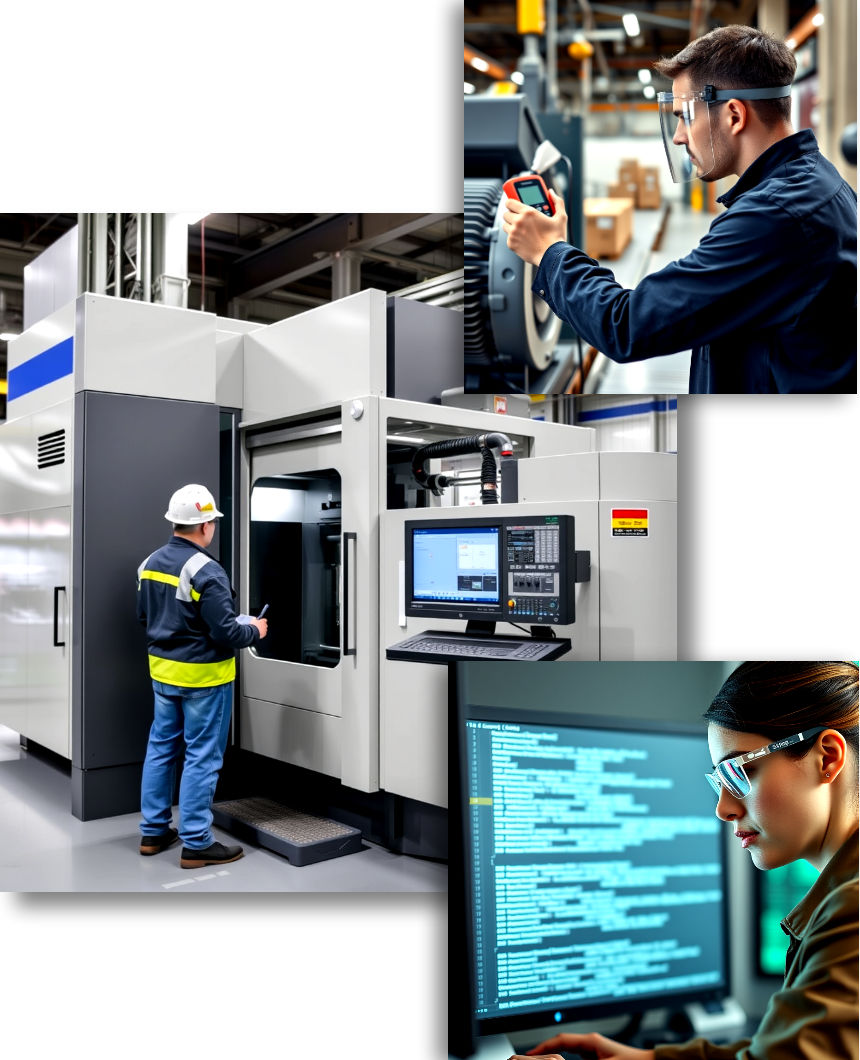Adult Learning Specialist
PLC Bob
Instructional Design
Articulate 360
Web Based Training
Classroom Training
Mechatronics/Electronics
Custom Mfg Trainers

Educating Adults
Starting as the trainer in the Air Force and going on to teach technical topics at six different colleges, Bob has experienced what works in technical training, both the good and the bad. Technology evolves faster than educational resources, so Bob created new courses, lessons, lab assignments and custom trainers to prepare his students for success.
Practical Programmer
Fascinated by computing since they came on the scene, Bob has been an early adaptor of applications employing computing power. Whether inputting machine code instructions via toggle switches, or crafting rungs of ladder logic, or AI prompt engineering, Bob has been there.
What About Bob?
What are some things about Bob that would make him a good choice for your instructional design or training project?
Old Smarts vs New Smarts
In the seasoned generation, you were considered smart if you knew things. You didn’t have to know everything, but you had to be knowledgeable about things in your chosen career. You valued the amount of effort it took to overcome challenges and you retained those gems of knowledge. The mobile phone generation is considered smart if they can find things. The quicker they find them, the smarter they are. Knowledge is immediate and becomes inconsequential past the time it is no longer needed. It can always be found again, or even a better way next time.
Keys to Just-in-Time Learning
Fingertip Access
Maintainers get calls while they’re all over the plant. To be practical, the just-in-time training device pretty much has to be on their person – the smart phone. Tablet style devices are better suited for planned maintenance like inspections, work instructions or PMs.
Distrbuted Access
Full coverage wireless needs to be evenly distributed even in warehouses, mezzanines, and in external work areas. Uneven coverage will result in complaints and eventually, a tendency not to carry the device.
IP Secutity
Permission based access to Intellectual Property is the most basic safeguard. When that needed info isn’t in your secure network, there’s a strong temptation to search for public PDFs and documents – even to pose a question on a public forum.
Proceedural vs Technical Skill
Most PMs are sequential, further relying on the maintainer’s knowledge and experience, to identify other conditions that needing correcting. Good base knowledge, from topical technical knowledge, gives the best PM results. Sequential knowledge for tasks; General knowledge for effectiveness.
Safety
An electronic device is generally prohibited from areas with combustible vapors or powders. The device also needs to survive a 20-foot drop to the ground without damage or loss of functionality. Another safety consideration is having it locked out during PIV operation.
Qualification
Competency testing methods for skill assessments or qualifying for a new job position tends to be retained knowledge based – the multiple-choice test. Shifting to more problem-based testing methods for younger people would more be more accurate – watch this short video and then order these problems from most likely to least likely.
How Learners Acquire Knowledge
Visual
Visual learners would seem to be the most common because technical learning is most commonly presented in textbook form. In my observation of adult learners, only about 30% can read well enough to fully grasp technical material from a written document. If it wasn’t for the videos, images and instructor’s narration, students, most students wouldn’t pass courses.
Aural
Aural learners pick up knowledge by hearing the technical topics. We’ve all heard of the musical talent who can “play by ear” or the student who passes courses without “cracking open the textbook.” Lectures, demonstrations, videos and podcasts are effective tools for instructing this type of learner.
Tactile
Tactile learners grasp proficiency through their fingertips – facts and procedures really don’t make sense until they have processed the information by putting their hands on it. Does the guidance, “turn the handle bars into the direction of the fall” really convey how to maintain balance on a bicycle? No – but they quickly master bicycle balance by experiencing the results of their inputs. Hands-on lab exercises and repetition works best for this type of learner.
Summary
Some learners are gifted, having two or even three of the methods to help them acquire knowledge and skills. Others have only one. They may struggle academically, but “catch on” quickly in the work place. Others may earn an A+ in classes, but not translate that knowledge well into the work environment. Identifying each person’s learning style is one of the best ways to ensure your training dollars translate into quality work performance.


